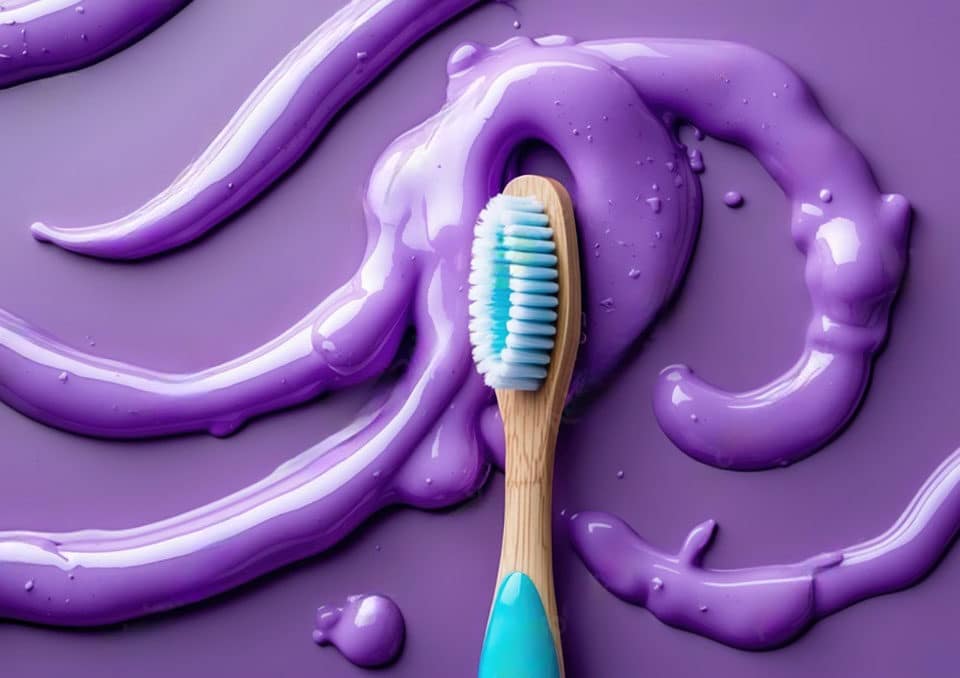As a parent, you want to give your child the best possible start in life, including a strong, healthy smile. Cavities, or dental caries, are the most common chronic diseases in children, but the good news is that they are entirely preventable with consistent care, good habits, and professional support. This article dives into expert tips to help you protect your child’s teeth from cavities while establishing a lifelong foundation of excellent oral health. It’s important to try to prevent cavities in children, so keep reading to learn more.
Table of Contents
Understanding Cavities: What Causes Them in Children?
Cavities occur when bacteria in the mouth produce acid that weakens and erodes the tooth’s enamel. This process happens when leftover food particles, especially sugars and starches, interact with bacteria. Over time, the acid forms small holes in the teeth, known as cavities.
No matter what stage of a child’s tooth growth it is, children are particularly vulnerable to cavities for several reasons. Their enamel is still developing, making their teeth more susceptible to decay. Children often snack frequently, consume sugary drinks, and may not brush or floss effectively without supervision. Even genetics and saliva production play a role in cavity development. By understanding these causes, moms can take proactive steps to stop cavities before they start.
Start Early: Build Good Dental Habits from Infancy

Oral care begins well before your child’s first tooth erupts. From infancy, gently wipe your baby’s gums with a soft, damp cloth after feedings to remove milk or formula residue. This simple routine keeps their mouth clean and helps prepare them for future oral care.
Once your child’s first tooth appears—typically around 6 to 12 months—it’s time to start brushing. Use a soft-bristled baby toothbrush and a tiny smear of fluoride toothpaste, no larger than a grain of rice. Brush their teeth twice daily, in the morning and before bed, to remove food particles and plaque.
As your child grows, make brushing a fun and interactive experience. Allow them to choose a toothbrush with their favourite characters or colours and play a two-minute song to encourage brushing for the recommended time. Demonstrate how to brush properly by brushing together, ensuring they reach all surfaces of their teeth. By age 3, increase the toothpaste to a pea-sized amount and teach them to spit it out rather than swallow. Supervise brushing until they are 6-7 years old, as young children may not have the motor skills to clean effectively.
The Importance of Fluoride for Strong Teeth
Fluoride is essential for preventing cavities because it strengthens tooth enamel and helps repair minor damage caused by acid attacks. Most children can benefit from fluoride in two primary forms: fluoride toothpaste and fluoridated water. Fluoride toothpaste, when used appropriately, helps protect teeth during daily brushing, while fluoridated water—commonly found in public water supplies—provides additional protection throughout the day.
If you live without fluoridated water, consult your child’s dentist about fluoride treatments or supplements. Professional fluoride applications during dental visits are quick, painless, and can significantly reduce the risk of tooth decay. Additionally, encourage your child to drink tap water instead of bottled water, as bottled water often lacks fluoride.
If your child complains about fluoride toothpaste’s taste, choose a kid-friendly flavour like strawberry, watermelon, or bubblegum. Make it fun by letting them pick a flavour they love.
Healthy Eating Habits: Limit Sugary and Sticky Snacks

Diet plays a significant role in cavity prevention, and as a mom, you can make healthy choices for your child that protect their teeth. Foods and drinks high in sugar or starch fuel the bacteria in the mouth, producing acid that erodes enamel. Unfortunately, children often love sugary snacks like candy, cookies, gummies, and fruit juices, which cling to their teeth and are difficult to clean away.
Instead of sugary treats, opt for tooth-friendly snacks that promote oral health. Fresh fruits like apples and pears can naturally clean teeth by stimulating saliva production. Crunchy vegetables like carrots and celery help remove food particles while providing essential nutrients. Dairy products like cheese and yogurt are rich in calcium and phosphates, strengthening teeth and neutralizing acids in the mouth.
Limit sugary drinks like soda, sports, and juice, which coat the teeth in sugar and acid. If your child drinks juice, offer it in moderation, serve it only with meals, and encourage water between meals. Avoid giving milk or juice at bedtime for toddlers and infants, as it can lead to “bottle rot,” where sugar remains on the teeth overnight, causing rapid decay.
By encouraging a balanced diet rich in vitamins and minerals, you’re helping your child’s overall health and strengthening their teeth and gums for the long term.
Teach Proper Brushing and Flossing Techniques
Teaching your child proper brushing and flossing techniques is critical for keeping cavities at bay. Start by showing them how to hold the toothbrush at a 45-degree angle and brush gently and circularly. Emphasize cleaning the front, back, and chewing surfaces of all teeth. For younger kids, singing a brushing song or using a timer can make brushing more engaging and ensure they brush for the full two minutes.
Flossing is equally important because it removes food particles and plaque between teeth—areas a toothbrush cannot reach. Begin flossing as soon as two teeth touch. Gently guide the floss between their teeth and curve it into a “C” shape to clean the sides of each tooth. If traditional floss is too challenging, consider floss picks or water flossers, making the process easier for little hands.
Make oral care a family activity by brushing and flossing together. When children see you prioritizing your dental health, they are more likely to adopt these habits.
Regular Dental Visits Are The Key to Prevention

Regular dental visits prevent cavities and ensure your child’s oral health is on track. Schedule their first dental appointment by their first birthday or when their first tooth emerges. These early visits allow the dentist to check for signs of tooth decay, provide professional cleanings, and offer guidance on at-home care.
Routine check-ups every six months ensure dental issues are caught early, preventing small cavities from becoming bigger problems. During these visits, your dentist may recommend additional preventive treatments like sealants. Sealants are thin, protective coatings applied to the chewing surfaces of molars, where cavities are most likely to form. They act as a barrier against food particles and bacteria and last several years.
If your child feels anxious about visiting the dentist, prepare them ahead of time by explaining the process positively and reassuringly. Reading books about dental visits or role-playing “dentist” at home can help ease their fears.
Lead by Example: Model Good Oral Health Habits
Children learn best by watching their parents, so modelling good oral health habits is one of the most effective ways to teach them. Brush and floss alongside your child to show them that oral care is a normal part of life. Please discuss the importance of a healthy smile and encourage them to take pride in their teeth.
Be consistent with routines, even when life gets busy. Brushing before school and bed should be non-negotiable, and regular dental visits should be prioritized.
Pay Attention to Warning Signs
This is an underrated point because cavities can sometimes develop even with the best efforts. Look for signs such as tooth sensitivity, pain when chewing, or visible brown or white spots on the teeth. If your child complains about discomfort, don’t delay—schedule a dental appointment right away. Early detection and treatment prevent minor issues from becoming bigger problems.
Building a Foundation for a Healthy Smile
Preventing cavities in children is not just about brushing and flossing—it’s about building a strong foundation of healthy habits early in life. By starting oral care from infancy, encouraging proper brushing techniques, promoting a balanced diet, and scheduling regular dental visits, moms can ensure their child’s teeth remain strong and cavity-free.
Remember, your involvement as a mom makes all the difference. With consistency, patience, and creativity, you can turn oral hygiene into a fun and essential part of your child’s daily routine. A healthy smile starts today, and your little one will thank you for it for years.
For children under 3 years old, use a small smear of fluoride toothpaste, about the size of a grain of rice. For children aged 3 and older, increase it to a pea-sized amount.
Baby teeth serve as placeholders for permanent teeth, helping with speech, chewing, and jaw development. Cavities in baby teeth can lead to infections and affect overall oral health.
Avoid putting your child to bed with a bottle of milk, juice, or sugary drinks. These liquids can pool around their teeth overnight, leading to “bottle rot.” Offer water instead.
It depends. Electric toothbrushes are more effective at removing plaque and can make brushing more exciting for kids, but your child also needs to be using the device correctly. Look for models with kid-friendly designs and built-in timers.
Signs of cavities include tooth sensitivity, pain while chewing, white or brown spots on the teeth, and visible holes. If your child complains of tooth pain, schedule a dental visit immediately.
Mouthwash can be used for older children (6+ years) who can spit it out properly. Look for alcohol-free, child-safe mouthwashes recommended by your dentist.
Yes, genetics can play a role in enamel strength, tooth alignment, and saliva production, which can influence cavity risk. However, good oral hygiene and regular dental care can still prevent cavities.
Check us out on Facebook and Twitter for daily information about Oral Health from Martindale Dental, or visit our offices in Hamilton and St. Catharines.
Have more questions?
Please contact us for all inquiries or to book an appointment with one of our convenient clinic locations. We look forward to hearing from you.




